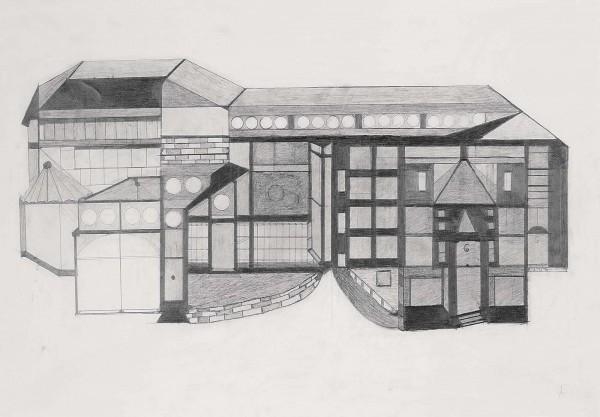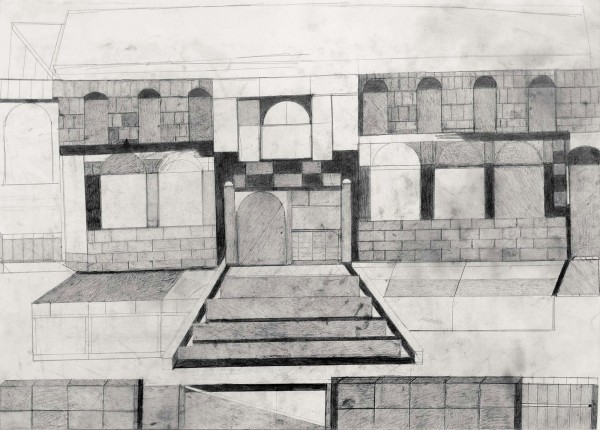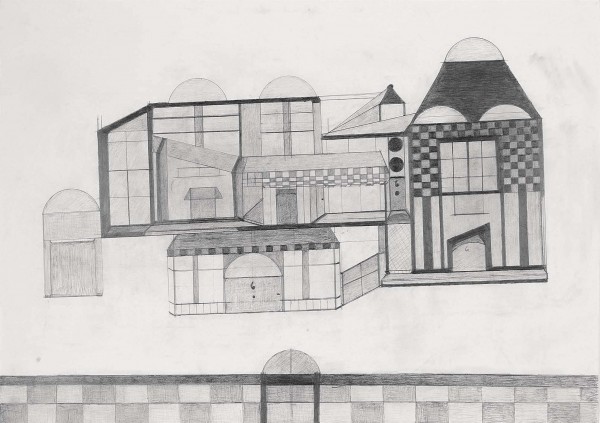Supported by the River House staff at the Bethlem Royal Psychiatric Hospital in London where he is hospitalized, Albert protects his identity and his personal history. He doesn’t want his medical history and biographical details to obscure his work. He says that his life has been difficult. He doesn’t see himself as an artist; his family never supported him in this sense, even though he has been drawing since his childhood. However, one of his brothers has been recognized as a talented poet. He refuses any “magical” interpretation of his work; for him the images do not speak of incarceration or confinement, as some commentators have suggested, nor do they symbolize release from detention. If they represent anything, they are ideal places — places that he would like to live in and that he imagines others to live in. Walls and fences are more protective than restrictive. After a period of hospitalization he now lives in supported community at the Bethlem Gallery.


